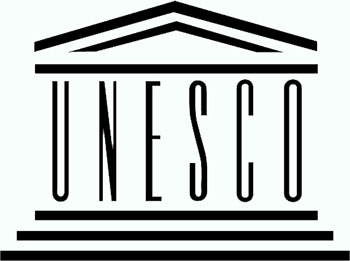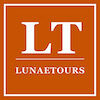
WELCOME TO CARRARA, THE WORLD’S MOST IMPORTANT PLACE PER THE EXCAVATION AND MANUFACTORING OF MARBLE.
IN 2029 CARRARA HAS BEEN INCLUDED IN THE LIST OF UNESCO CREATIVE CITIES THANKS TO THE ANCIENT TRADITION OF MARBLE CRAFTSMANSHIP.
THIS IS THE PRIVATE PAGE OF CTTOURS DEDICATED TO TOURIST INFORMATION ABOUT CARRARA AND ITS SURROUNDINGS.
HERE YOU WILL FIND USEFUL INFORMATION FOR TRAVELERS WHO WANT TO COME TO CARRARA, VISIT THE MARBLE QUARRIES, GET TO KNOW ITS TERRITORY AND TASTE THE TYPICAL PRODUCTS.
In this page dedicated to the tourist information about Carrara and its marble mines, you find:
- Information about how to get to Carrara.
- What to visit in Carrara: the marble quarries, the sculpture workshops, Carrara old town, the marble villages.
- Downloadable tourist itineraries for independent travelers..
- What to eat and to drink in Carrara.
Ciao, I’m Umberto Cattani owner of CTTours and licensed tourist guide for Carrara, Cinque Terre, and Florence, where I arrange guided tours and excursions.
Sometimes travel information about Carrara are not easy to collect on internet: how to get to Carrara, which mean of transport are available to get to the marble caves, what is worth to visit beside the marble quarries, what guided tours are available, what routes to follow if you are coming with your car, what are the local food and wine specialties, and so on.
This kind of Carrara information center aims at providing all those necessary tourist information and maps for making you plan in advance the inclusion of Carrara and the amazing marble mines in the itinerary of your next trip to Italy.
Don’t hesitate, do it soon, it’s really worth!
If the information that you are looking for are not here, you can try on the Carrara Municipality website or in the Tourist Board website
Carrara is located right by the sea along the coast of northern Tuscany, its territory stretches from the top of the Alpi Apuane (marble mountains) all the way down to the Mediterranean (Tyrrhenian Sea). In the range of few kilometers, you pass from the wide sandy beaches, through green gentle hills (where good wines and olive oils are made), until the top of the unbelievable marble mountains. Here you find a photo gallery of the main types of Carrara marbles.
HOW TO GET TO CARRARA
Carrara is strategically located near famous tourist destinations such as Lucca, Pisa, Cinque Terre, Florence, and along important communications routes. All those who are coming to Tuscany from the north (Europe or Italy) or from the east (Riviera, France, Spain) cannot miss the incredible sight of those white high mountains that stand in the horizon.
Here below find more travel information about different ways to arrive in Carrara:
- By train. Carrara train station is called Carrara-Avenza and is located along the main railway line Pisa-La Spezia. Check here the National Railroad Trenitalia timetable.
- By car. Carrara has its highway exit that is located along the A12 Genoa-Livorno. From the tollbooth to the marble quarries it’s approx. 30/40 min drive.
- By public bus. Frankly, it’s not the best way to reach Carrara and the marble quarries, due to the reorganization of Tuscan public transport it’s difficult to collect more info. If need more assistance please email me.
- By plan. The three closest airports are Pisa (40 min. drive from Carrara), Florence (1 hr. drive from Carrara) and Genoa (1 hr drive from Carrara).
WHAT TO VISIT IN CARRARA AND SURROUNDINGS TRAVEL INFORMATION
Information about the Carrara marble mines. Find here tourist information about Carrara, the marble quarries and the rest of the territory. This is a virtual tourist office of Carrara where travelers can obtain more information for coming and visit the area.
1) CAVE DI MARMO DI CARRARA
The marble quarries are something really unmissable. They are considered the world’s largest marble bedding, spreading among the three main valleys (Colonnata, Fantiscritti, Torano) that branch out behind Carrara town center. These marble caves are something unique, unbelievable, breathtaking, no pictures can describe the sensation you prove once you find yourself surrounded by these white, overwhelming, bright marble mountains.
They are something unique in terms of geology, and in terms of history, art, and archaeology. 2000 years ago the ancient Romans rebuilt Rome, capital of the Empire, even with this marble: temples, palaces, triumphal arches, emperor’s statues. Italy’s most important museums such as Vatican Museums, Rome Archaeological Museum, Uffizi, Accademia, and many others are full of Carrara marble works made by the greatest masters like Donatello, Michelangelo, Bernini. From then to the present days, generations of builders, architects, interior designers, craftsmen, loved using the Carrara marble for their works!
If you wanted to find more tourist information about Carrara marble and the methods of its excavation and transportation throughout 2000 years, you could download one of the free itineraries doable with your own car (see below in the page), or book here your private guided tour.
Here you find a photo gallery of the marble quarries.
These are some colleagues of mine I coop with for the tours in the marble quarries.
CTTours di Umberto Cattani – +39 348 7737 715 – www.cavedimarmocarrara.com
Davide Bruni +39 333 6024026 – www.carraramarbletour.it
Marco Bernacca +39 338 578 3629 – www.cava177.com
Manuela Righini +39 328 749 4324 – www.toscanatourexperience.com
Paolo Biancardi +39 347 385 6496
INFORMATION AND BOOKING
Contact us for designing an itinerary together or even just for asking advice. We will do our best to reply within 24 hours.
2) CARRARA HISTORICAL CENTER
The city of Carrara. Carrara has about 65,000 inhabitants, the municipal territory extends from the Apuan Alps to the sea, in the same coastal area the ancient Romans founded a colony called Luni whose archaeological area can be visited nowadays.
The historic center of the marble city dates back to the X-XI century A.D. when trade, industrial and agricultural activities begin to flourish again. The three most important monuments are: the Cathedral of the XI-XIV sec. entirely built of marble blocks, the castle Malaspina (partially visitable) built in 1300 and renovated between ‘400 and ‘600, now houses the Academy of Fine Arts of Carrara, and Piazza Alberica, the Renaissance heart of the city embellished with beautiful palaces of the ‘500-‘ 600-‘ 700.
But the thing not to forget and that makes the city truly unique, is that ALL in Carrara is built of its marble: houses, palaces, churches, urban furniture, portals, sidewalks, windows, balconies.
Where else in the world do you find such a wide range of products of construction crafts, of applied arts, like in Carrara?
Here you will find a wide gallery of images of the marble quarries of Carrara.
These are the museums of Carrara:
- Museo Civico del Marmo
- CARMI (dedicated to Michelangelo in Carrara)
- Mudac (Museum of Contemporary Art).
3) OTHER INTERESTING TOURIST ATTRACTIONS IN CARRARA
The villages of marble. This is the name given to the villages located along the marble valleys. Codena, Bedizzano, Colonnata, Miseglia, Torano were originally settlements dating back to the Roman era where the slaves, who were engaged in the extraction of marble, lived. Today these are small and charming villages, very characteristic, where still live mainly marble quarrymen.
The largest is Bedizzano with almost 1000 inhabitants, where is visible the huge marble altar carved in the 1600 for the rich Scizzi Family. The other hamlets are smaller, but worth visited to enjoy that particular atmosphere and some breathtaking views of the quarries.
The most famous is certainly Colonnata, the village is surrounded by imposing marble mountains, the same material that is used for making the marble basins in which is aged the famous lard of Colonnata (Pork’s cured and aged back-fat, that is Slow Food Presidium).
The sculpture workshops. You can’t leave Carrara without having visited one of them. Here you see the sculptors at work while they create their works of high-level craftsmanship, and you learn more about the techniques used to “… release the figure that is inside the block…” (Michelangelo Buonarroti).
Visitors are welcome, but since these are places of work, better warn of your arrival by phone or email. Here you find the list of sculpture workshops if you are an independent traveler, otherwise contact us, we organize an involving guided tour.
TOURIST ITINERARY FOR INDEPENDENT TRAVELERS AROUND CARRARA AND THE MARBLE QUARRIES
If you are an individual, a small or large group of tourists, and you have decided to come to Carrara you have two options available:
- Contact a tourist guide, if you are eager to learn more about our territory. Your tourist guide will help you organize a half or full-day tour itinerary. Look for a Tourist Guide in the official list, or contact me directly.
- If you are an independent traveler curious to explore the area on your own, download one of the pdf itineraries below to find the route description of an itinerary to visit the marble quarries and Carrara.
Pay attention, the downloadable itineraries are dedicated only to people traveling with their own car/motorcycle.
If you travel by coach, find here the itineraries suitable for you or just contact us.
3 hours itinerary follow it on Google maps https://goo.gl/maps/tswzyV15z2H2
6 hours itinerary follow it on Google maps https://goo.gl/maps/tswzyV15z2H2
EAT AND DRINK IN CARRARA
Despite the presence of the sea, do not consider Carrara a fishing town, for centuries the boats have served only to transport marble and only after the birth of the town of Marina di Carrara (about 1800) were developed some maritime activities.
Therefore, the traditional food is born and is tied to the work in the quarry and to the needs of the quarrymen, using mainly the agricultural products, the meat of farmyard animals and the pig. Right from the use of all parts of the pig, especially the less valuable ones, the Lardo di Colonnata is born. Don’t be fooled by the name “lard”, it’s not the ones used for cooking or frying, it is a unique cold cut: pork’s back-fat cured and aged in marble basins typical of the village of Colonnata where they have been making this delicacy for 1500 years!!!
Other local specialties are: pasta and beans, ravioli or tordelli (stuffed with meat or spinach and ricotta), lasagne stordellate, baked or marinated codfish, stock fish with potatoes, vegetable tarts, stuffed rabbit, chicken at cacciatora style with polenta (with tomato sauce and olives) porcini mushrooms easy to find in our chestnut forests. Chestnuts are used to make pasta, bread and cakes. From the sea we use mussels served boiled or stuffed, anchovies and smoked herrings.
The traditional Carrara cake is rice cake: milk, eggs, and a little rice. Yummy!!! It is not easy to find, but some restaurants, pastry shops or bakeries continue to make it according to the tradition.
For a snack, do not miss trying the local focaccia stuffed with farinata (cheek pee flan).
The local wines are full-bodied and of good quality, we make both white and red ones produced in the surroundings of Carrara: Candia Hills DOC located between Massa and Carrara and Luni Hills DOC located west of Carrara.
Here you can find the list (surely incomplete) of restaurants and pizzerias where you can taste local food.
INFORMATION AND BOOKING
Contact us for designing an itinerary together or even just for asking advice. We will do our best to reply within 24 hours.
